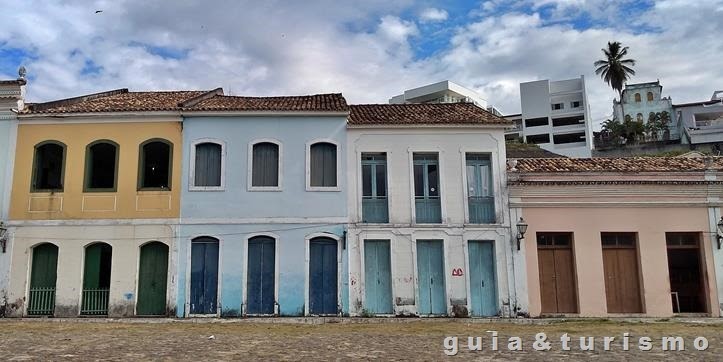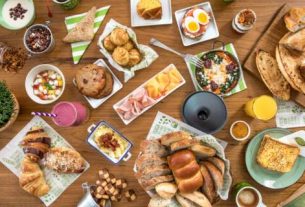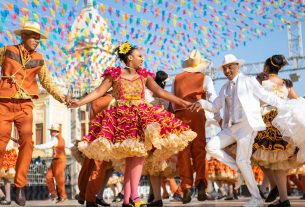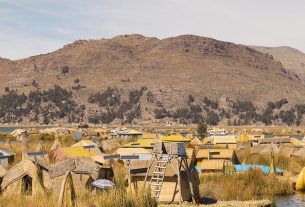219km from Vitória, in the north of Espírito Santo, is the municipality of São Mateus, which, founded in 1544, is the oldest in the state.
São Mateus has an extensive coastline with good beaches, rivers that boost the regional economy, and has historical marks in mansions built where until the middle of the 19th century there was the most important port in the north of the state and south of Bahia.
>> See all destinations in Espírito Santo.
Historical facts about São Mateus:
> It was in São Mateus that Fernão Dias, son of Men de Sá, Governor General of Brazil, was killed in a battle in which the Indians resisted the Portuguese and which became known as the Battle of Cricaré.
> São Mateus once belonged to Bahia. For 59 years it was part of the Captaincy of Porto Seguro and only returned to Espírito Santo in the first half of the 19th century.
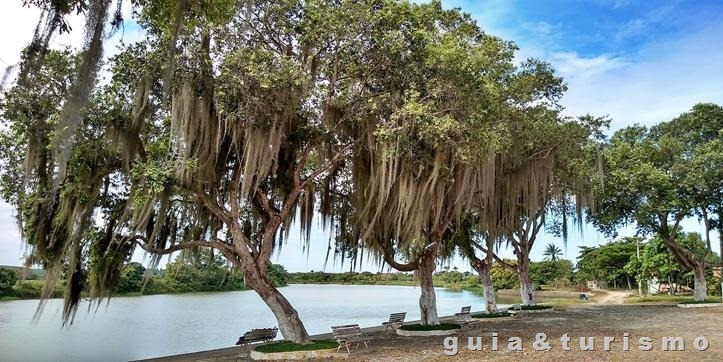 |
| Site of the old port. |
> São Mateus had an important river port that boosted the region’s economy and transformed the city into a commercial center with the export of mainly cassava flour and the arrival of enslaved black people.
> São Mateus was a major producer of cassava flour, being for a long time the main product of the economy in the north of the province. Considered the best in Brazil, it was purchased by several states.
> The port of São Mateus was one of the ports that received the most black slaves in Brazil. It was there that in 1856 the last clandestine vessel of enslaved black people was seized.
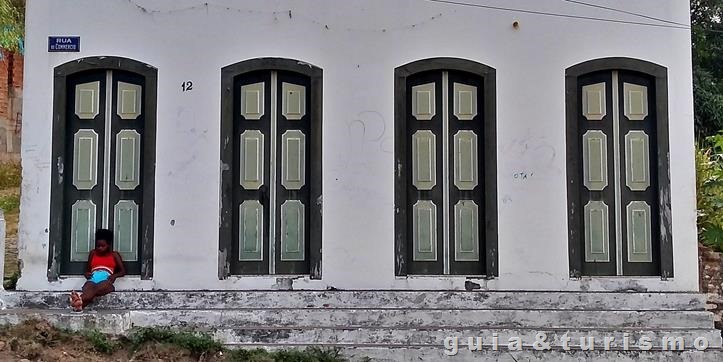
> Enslaved people were sold there and taken to farms in the region. Thus, the municipality has the largest Afro-descendant population in the state. Today there are many quilombola communities.
> Flour and slavery sustained a luxurious era and fueled the urban center that emerged there with mansions, residential houses and commercial houses. Today it is the Porto neighborhood.
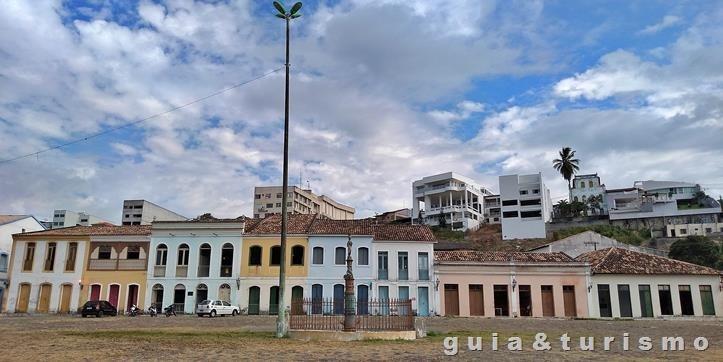 |
| The port mansions today. |
> With the highway, the port lost its importance. Families moved to the upper part of the city and then to other cities and over time the port became abandoned.
> Bars and nightclubs began to operate in the mansions (which already existed, but timidly). The region became a bohemian area and thanks to this the mansions still exist today.
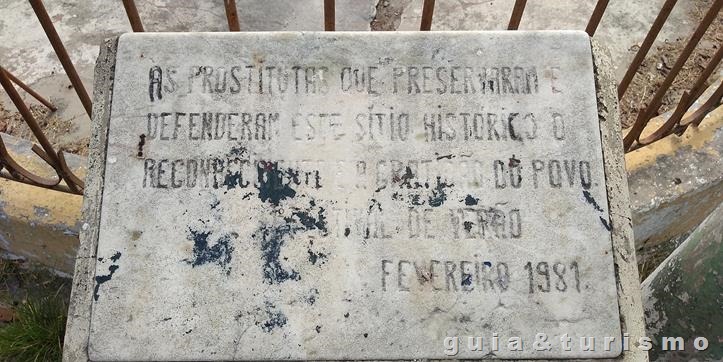 |
| A plaque commemorating the prostitutes who lived in the port. |
> To put an end to prostitution, the city council wanted to tear down everything, but was unable to do so. In turn, the elite managed to get the houses closed in court and the prostitutes had to leave.
> On the other hand, a group made up of bohemians and intellectuals began a movement to preserve the houses, managing to have the complex transformed into a Historic Site of São Mateus and which was later listed as a National Historic Site.
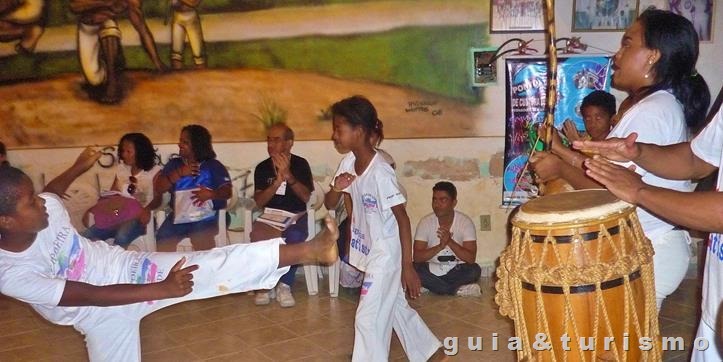 |
| Social project that takes place in one of the mansions. |
> Today the mansions house cultural spaces, public offices, associations and the occasional bar. There is also the Africa Brazil museum, it is private and due to lack of resources it is closed to the public.
> Until recently it was possible to find ex-prostitutes from that time there. In 2013, during a visit, I met one of these ladies.
Attractions in the upper city
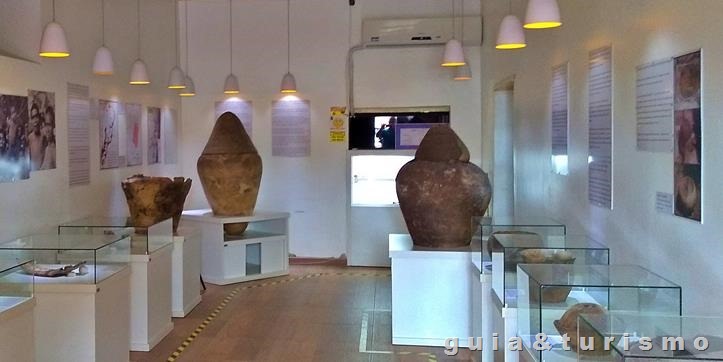 |
| Collection on the ground floor of the Municipal Museum. |
In the upper part of the city of São there is the Municipal Museum. Housed in an 18th century townhouse built to house the Town Hall and Jail.
On the ground floor there are several archaeological pieces found in various places in the municipality. The collection includes, among other pieces, funerary urns used in indigenous burials.
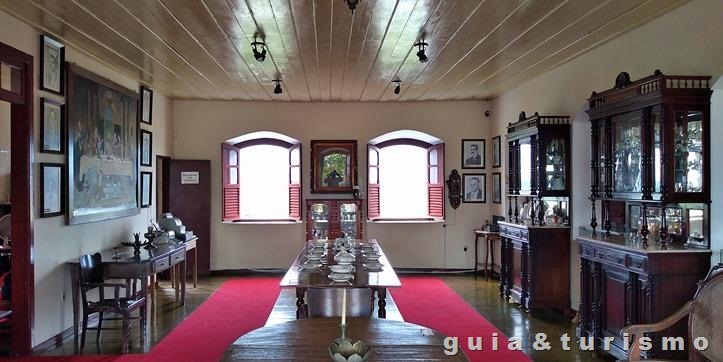 |
| Collection on the second floor of the National Museum. |
On the second floor, a collection of paintings and furniture that belonged to local families recall the environments and customs of another social group that lived in the municipality in the 19th century.
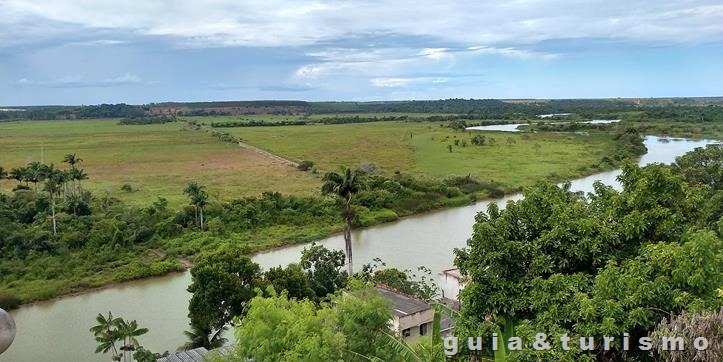 |
| View from the window of the National Museum (Rio São Mateus). |
The museum has a good collection and is well maintained, as well as a beautiful view of the river that runs through the city. But it’s not open on weekends. To visit you have to go from Monday to Friday, 8am to 5pm, free entry.
NOTE: My visit was before the Pandemic. Confirm the information with the Department of Culture. Tel. (27) 3763-1565.
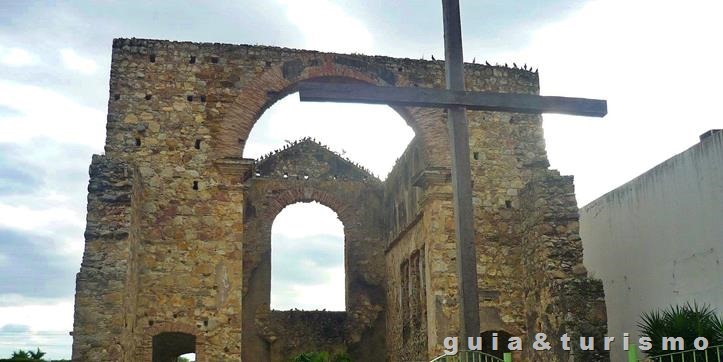 |
| Ruins of the Old Church. |
Another historical attraction in the upper city is the Old Church of the 19th century. In fact, they are ruins of what would be the largest church in the city. It is easy to find in the city center, close to the Municipal Museum.
Due to the cost and time needed to complete the church, the work was closed by the City Council, leaving only the walls made with stones from the ballast of ships that arrived at the port.
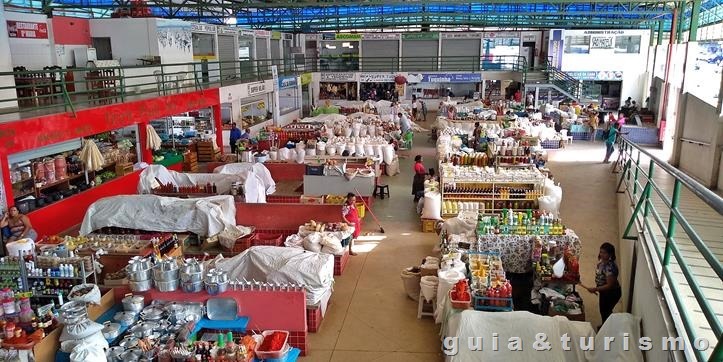 |
| Municipal market. |
Also in the upper city, right in the center, is the Municipal market. It’s not big, but it’s a good option for you to buy seasonings, peppers, condiments and eat tapioca on the weekend.
Guriri
12km away from the city center is Guriri Island with good options of warm water beaches and where the Upside Down Housethe city’s newest attraction and which has attracted many onlookers.
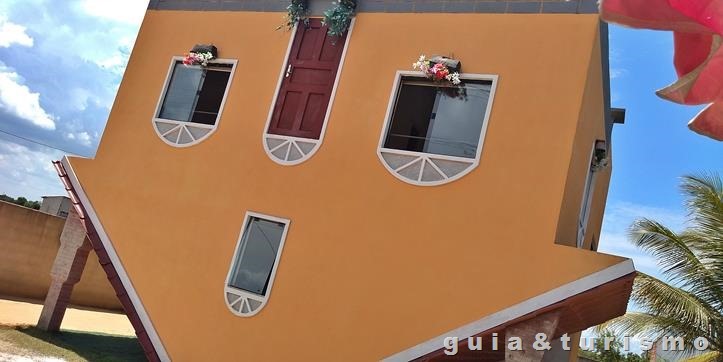 |
| Upside Down House. |
The house was built by a retired bricklayer and since then, every day there have been people at the gate to see the inside of the house, which is very interesting, and take funny photos. There is a visiting fee charged, which when I went was R$ 3.00.
NOTE: My visit was before the Pandemic. Confirm the information by phone: 27 99794-0336.
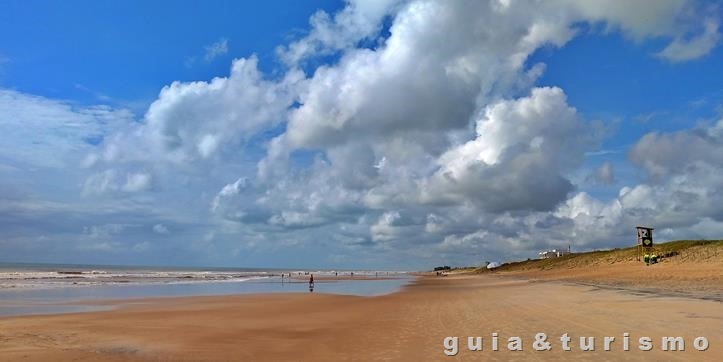 |
| Guriri Beach. |
But going back to talking about the beaches, the main one is the Guriri Beach. An extensive and beautiful urban beach with a promenade, bars and restaurant. All of this means that it is frequented by a lot of people.
One of the attractions on the Guriri Beach promenade is the Capelinharight in the center, which was built by a family in honor of Iemajá, but later became a Catholic chapel.
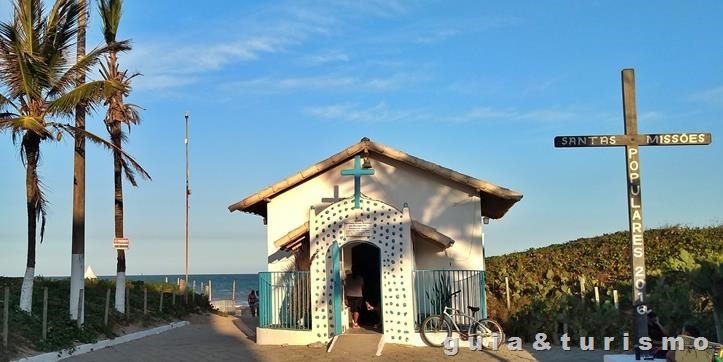 |
| Guriri Chapel. |
A few kilometers to the south is Bosque Beach, beautiful beach full of trees that give the beach its name. Quieter and with more natural characteristics, it is frequented by people who are going to spend the day.
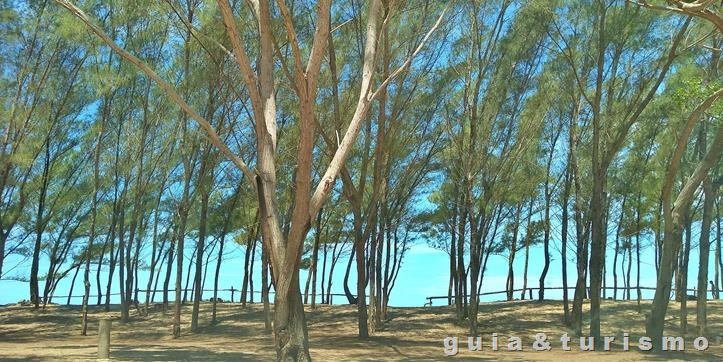 |
| Bosque Beach. |
And 25km from Guriri is Barra Nova, a bucolic fishing village with sea, river and lagoon attracting lots of people. There are inns and restaurants on site. The route is on an unpaved road.
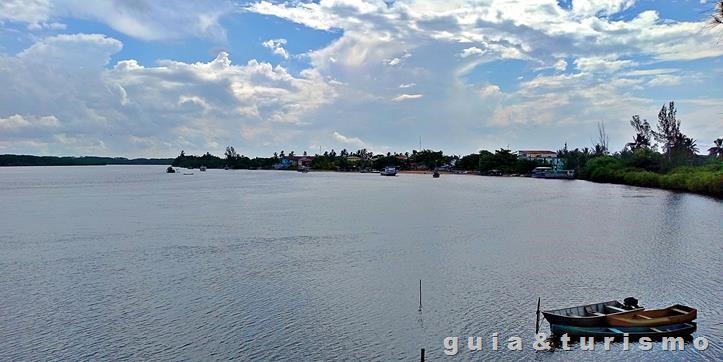 |
| Lagoon in Barra Nova. |
Even further away, on the border with Linhares, is the Urussuquara Beach and if you cross the river you reach Barra Secathe only naturist beach in Espírito Santo.
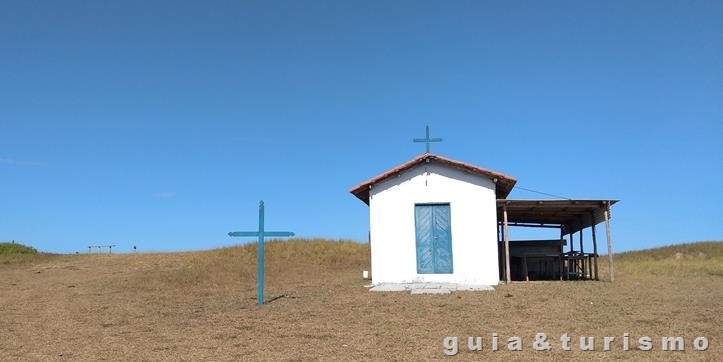 |
| Urussuquara. |
How to get
> From Vitória, follow BR 101 north. The highway cuts through the city of São Mateus.
> By bus, it is with the company Águia Branca, which has several schedules leaving from Vitória.
FOR YOUR TRIP:
Tour guide: Get to know Espírito Santo with a guide. Make contact with me.
accommodation: Make your reservations on Booking.com and travel with peace of mind.
Car rental: Are you going to rent a car? Get quotes from several companies on rentcars.com.
Airfare: You can buy at Passagens Promo.

Sign up for our newsletter and stay up to date with exclusive news
that can transform your routine!
Warning: Undefined array key "title" in /home/storelat/public_html/wp-content/plugins/link-whisper-premium/templates/frontend/related-posts.php on line 12
Warning: Undefined array key "title_tag" in /home/storelat/public_html/wp-content/plugins/link-whisper-premium/templates/frontend/related-posts.php on line 13

